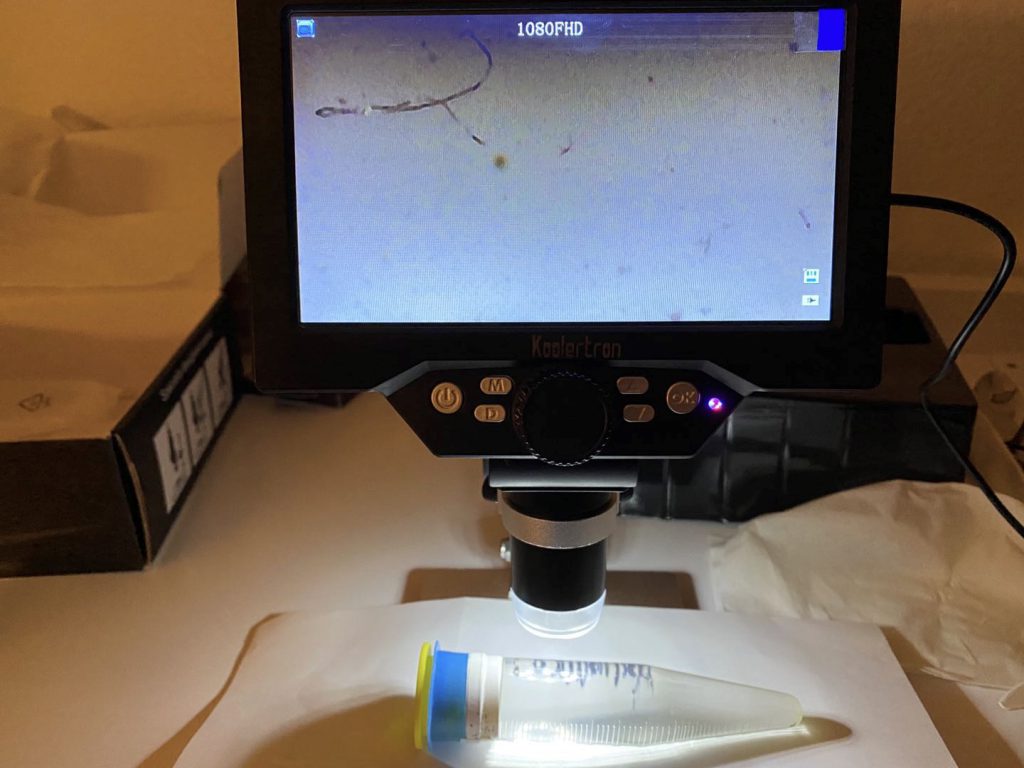In the past three years, my research has been specifically focused on oceanic microplastics. However, I was able to travel to Fort Wayne, Indiana to test the microplastics level in the St Marys River, and other freshwater sources this summer for a comparative study. One reason why the St Marys River was chosen, was due to the fact that St Marys River flows into the Maumee River, which in turn, directly flows into Lake Erie. Studies have shown that the 5 Great Lakes are extremely polluted, with 10,000 tons of plastics entering the system annually, with Lake Erie being the most polluted among the 5 rivers.
To collect the samples, a plankton net with a 150 um mesh was used. Samples were collected from four different areas along the St Marys River (shown on the map below) — two along the sides of the river, and two in the middle. These regions were chosen because the middle of any given river tends to move faster compared to the sides. It was predicted that due to this fact, the microplastics level would differ in these four regions as well. For the samples collected on the side, one was collected on the northern river bank, which had less infrastructure, while the other was collected on the southern river bank, which had more infrastructure and passersby. The samples collected in the middle of the river were obtained from opposite sides of a park.

There were many more plastics and sediments on the side of the St Marys River, compared to the middle. However, in the middle of the river, where there was more movement and higher turbidity, there seemed to have more living organisms, along with small pieces of what seemed to be dirt or seaweed, though there still were quite a few pieces of plastics. This could be due to the fact that the lower turbidity in the side of the river meant that the plastics were more likely to settle in that region.
Most of the plastics that were found in this region were fibers, although beads were found as well. The fibers that were found were compared to control samples of natural (cotton) fibers and synthetic (polyester) fibers, and obvious differences could be found within the two sets of controls. For example, the natural fibers were rougher and straighter, compared to the curvier and smoother synthetic fibers.

Considering the small sample size of this study, and given the small volumes of specimens collected over a relatively short time period, it can be assumed that the volume of microplastics in this river system is comparatively large.
Due to the fact that most of the plastics that were found in this river were fibers, many of the microplastics are from the textile industry, likely from the waste that accumulates after people all around the area do their laundries. A recent study showed that just a single laundry load could release up to 700,000 microplastic fibers.
I was given the chance to share my findings with locals from Fort Wayne. I was able to share the message about microplastic pollution in general, with the audience, along with my discoveries from the St Marys River. I’ve found that clothes can be a huge source of plastic pollution — not only in Fort Wayne. Studies done in the Charles River have also shown the predominant type of microplastic pollution to be in the form of fibers.

To help mitigate this problem, people can be more conscious of the clothes that they are wearing, and try to choose more environmentally friendly clothing. Beyond that, they can also be more careful when washing their clothes, being sure to only wash when necessary. While there currently isn’t a way to completely prevent microplastic fibers from entering the water systems, scientists are currently working on a type of filter that can be used to potentially keep microplastics from entering the wastewater drainage facilities in the first place, to help prevent fibers from entering the river.


